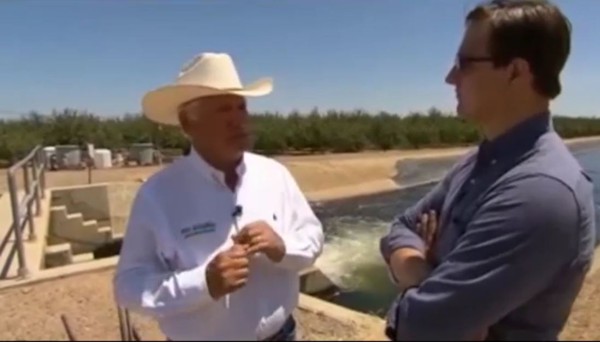El Niño partially fixes the problem?
The El Niño climate phenomenon has been blamed for fuelling a spate of recent natural disasters around the world, from flooding in northern England and Paraguay to bushfires in Australia to storms in Texas. But, for many people in California, the current El Niño has been eagerly anticipated.
The state, which is in the grip of a four-year-long drought, received a welcome dose of rain and snow in December. The Sierra Nevada snowpack, which provides about 30% of California’s water, now measures above average for this time of year – a stark turnaround from April, when it measured just 5% of the long-term average.
Many Californians hope that a strengthening El Niño signal during January and February – the state’s rainiest months – will bring precipitation that will help ease the worst drought in 1,200 years. However, experts have warned that El Niño is unlikely to be a drought breaker, with water likely to run off the parched land, even risking mudslides in some places.
“El Niño has got a lot of attention. There are a substantial number of Californians who believe that El Niño is like the cowboy in the white hat who comes to the rescue of someone in peril,” said Greg Webber, executive director of California Urban Water Conservation Council.
“But a single El Niño event will not overcome all of the drought. Even an event of historical magnitude will not refill the aquifers that have been substantially depleted.”
Michelle L’Heureux, climate scientist at the National Oceanic and Atmospheric Administration’s climate prediction center, said El Niño brings a 50% probability of above-average rainfall.
“We expect some drought relief. It won’t be a drought breaker .There should be caution when people say that,” she said.
Nevertheless, some Californians are already seeing the benefit. The recent snowfall, coming just months after scientists declared the Sierra Nevada snowpack at a 500-year low, has attracted skiers and snowboarders back to the slopes.
Heavenly Mountain Resort, in Lake Tahoe, has received 175in of snow already this season and opened its slopes a week earlier than planned. The blanketing of snow already surpasses the 89in received in last year’s season, which ran until April.
“It’s been a really good start and generated a lot of momentum,” said Pete Sonntag, chief operating officer of the resort. “There’s a lot of excitement out there, there’s plenty of pent-up demand from people who want to get out there and ski and snowboard.
“We’ve endured four lean years but we’ll be pushing the record prior to the drought, for sure. There’s cause for a lot of optimism for those who operate ski resorts.”
The drought was tough for all ski resorts in the region – Squaw Valley Alpine Meadows saw a 30% drop in visitor numbers. But Squaw is seeing the rebound, with record visitor numbers over the two-week Christmas holiday period, along with 17 feet of snowfall so far this season.
Andy Wirth, chief executive of the business, said climate modelling he’s seen suggests there will be El Niño-driven snowstorms every three to five days over the next two months, meaning the record snowfall of 832in in 2010-11 is under threat.
“It’s been a phenomenal start to the season, this is only the third time in our 60-year history that we’ve had the entire mountain open,” Wirth said. “There’s a real benefit to the small businesses of Lake Tahoe, the retailers and restaurants. I’m thrilled for them because the past four years have been remarkably challenging.”
Wirth is keen to point out that he is “grounded in the truth” of climate change, pointing to the m spent on snow-making technology as evidence that the industry accepts snowfall volumes will be increasingly uncertain in the future.
“I don’t want people to think we’re here rolling around in the snow, like we’re Donald Trumps,” he said. “That man is a buffoon, an absolute buffoon. My view is grounded in science.”
El Niño typically brings increased moisture to the southern half of the US, meaning that Oregon and Washington state are expected to be drier than California. Its key characteristic, however, is the warming of the Pacific Ocean, which is bringing an unusual influx of marine animals, such as hammerhead sharks and red crabs to California’s coast.
The boom in warm-water species has proved fruitful for fishing tour operators such as Marine Del Rey Sportfishing, which is based in Los Angeles.
“This year has been unprecedented for the number of large yellowtails we are getting,” said Rick Oefinger, owner of the business, who has been running fishing trips in the area since 1970. “In previous El Niños we’d get 2-10lb fish, this year they are 20-40lb. There’s unbelievable fishing just a couple of miles off the coast.
“We’ve seen hammerhead sharks, black and blue marlin, a lot of sea turtles. There’s a lot more of them than in the past. I’ve seen people out fishing that I haven’t seen in 20 years. It’s definitely brought people out of the woodwork.”
guardian.co.uk © Guardian News & Media Limited 2010
Published via the Guardian News Feed plugin for WordPress.

